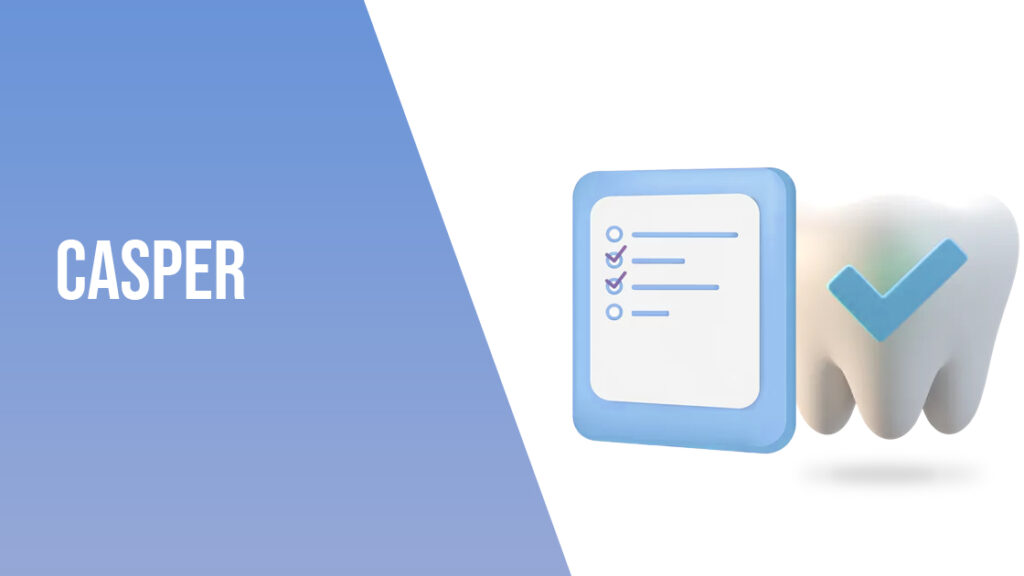Ultimate guide to the Integrated National Board Dental Exam (INBDE)
“Veni, vidi, vici”, touted Caesar to the Senate, after a swift victory in Zile. Your battle, on the other hand, will surely not be as brief. But fear not, for in this blog, you will find the Ultimate Guide to the INBDE. This blog will serve to answer your questions on topics like the INBDE exam format and eligibility, study tips and strategies to ace your INBDE, course prep material you can make use of and common mistakes you can avoid while preparing for your exam. All this and more, so that come exam day, you leave the test center feeling like Caesar post-conquest.
Understanding the Exam Content, Format, and Scoring.
About the INBDE
The INBDE covers all written examination requirements for your dental licensure in all US states and territories. Organized by the Joint Commission on National Dental Examinations (JCNDE) and Department of Testing Services (DTS), it can be taken from any Prometric test center in the US and Canada. This is a two-day exam which you can book all year round.
Content
The exam employs the “Domain of Dentistry” to test candidates. The Domain includes 56 Clinical Content(CC) areas and 10 Foundation Knowledge(FK) areas.
The CC areas are grouped into 3 major sections :
- Diagnosis and Treatment Planning
- Oral Health Management
- Practice and profession
The CC areas encompass basic tasks required to be performed by a fresh graduate in general dentistry and the FK areas demand the knowledge required to perform the tasks in the CC areas.
Following is an allocation split of questions(items) across the aforementioned criteria asked during the exam

*To know more about all of the 56 CC areas and 10 FK areas, read pages 5 through 8 from this link*
Integrated National Board Dental Examination (INBDE) 2023 Candidate Guide.
Format
As mentioned earlier, this exam is conducted over the course of two days for a joint total of 12 hours and 30 minutes, including scheduled break times.
Day 1 starts with a 15-minute optional tutorial for the exam. Furthermore, exam content comprises 3 sections of 100 standalone questions for which you will be timed for 105 minutes, and the 4th and last section on the first day is a case-based section of 60 questions for a time of 105 minutes as well. You may access scheduled optional breaks of 15 minutes after each section.
Day 2 will have 2 case-based sections of 70 questions each with both sections assigned 105 mins. You can make use of a scheduled break and a post-exam survey of 15 minutes each after both sections.
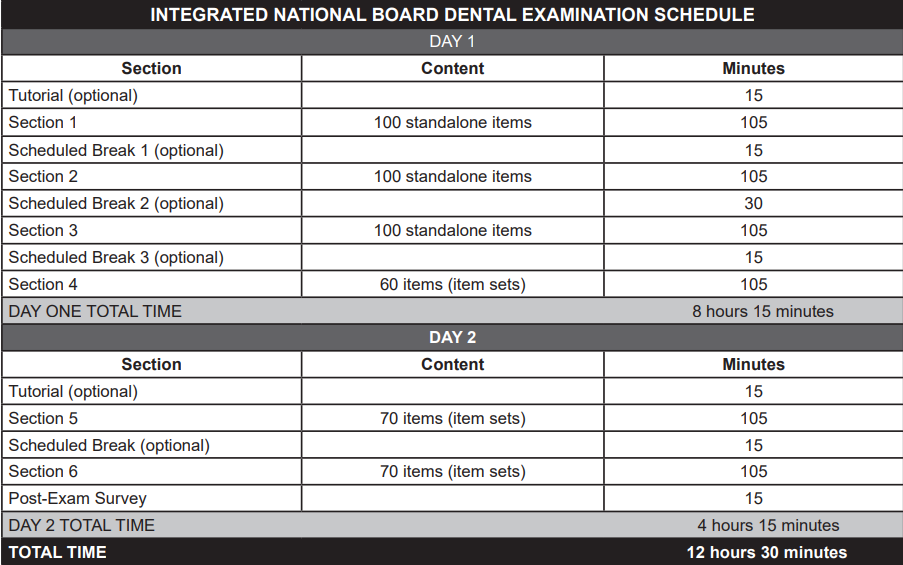
Question Types:
All questions are multiple-choice with only one response deemed correct. Here are some examples of the variety of questions asked.
- Complete a sentence to display a concept or an idea
- Questions that communicate a problem or set of circumstances to figure out
- Negatively worded questions such as EXCEPT FOR or NOT( look for capitalized keywords)
- Patient box questions( shown below)
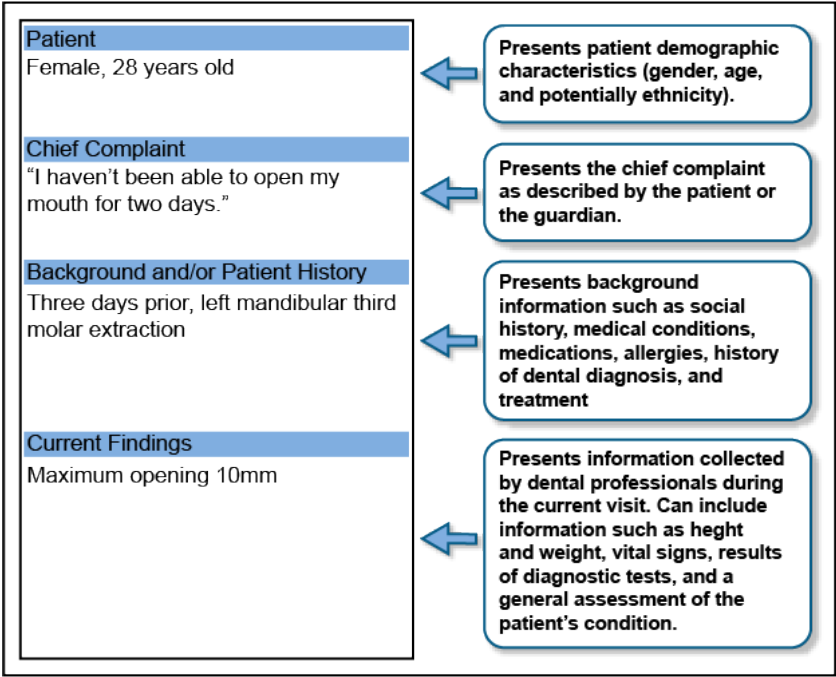
- Dental charts
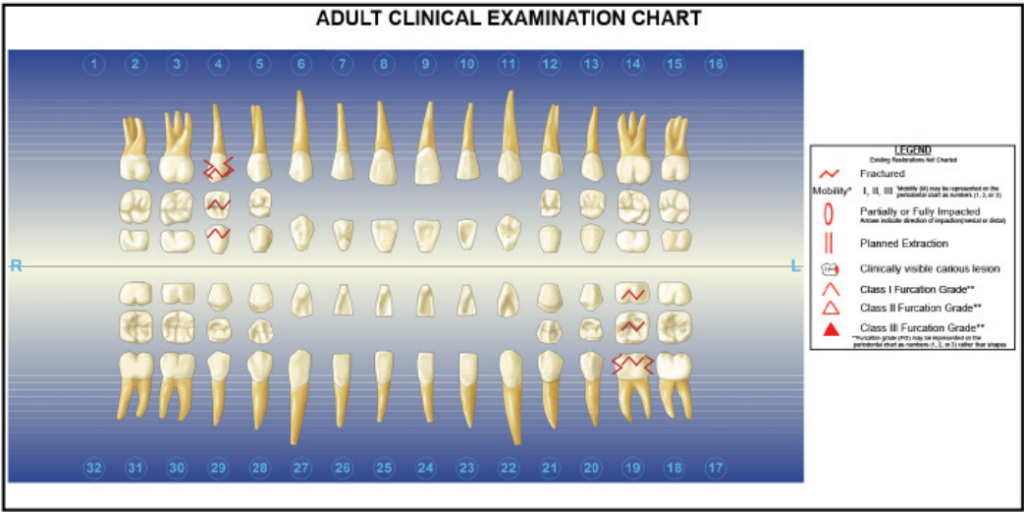
Scoring
The minimum passing score is determined by the SMEs and JCNDE every year. Scores are reported only as a “pass” or “fail”. For the purpose of analysis, candidates who DO NOT pass receive a piece of performance information which includes the overall score by the boards.
Internally, the exam is scored via scale scores ranging from 49-99, with 75 representing the minimum passing score. Scale scores are not raw scores, i.e. the number of correct answers.
Results of the exam are available three to four weeks after the examination date.
Exam Eligibility and Fees
Eligibility
Eligibility requirements are differentiated based on educational backgrounds; i.e. students/dentists from CODA Vs Non- CODA-accredited schools. CODA is the Commission on Dental Accreditation, and a candidate about to graduate or have graduated in dentistry from somewhere other than the US or Canada is considered a candidate from a non-CODA school.
Requirements for a Non-CODA candidate include:
- Accreditation of dental degree through ECE(Educational Credentials Evaluators).
- For current students from a Non-CODA school, the student needs to confirm the status of the educational program they are in by completing the Certification of Eligibility form.
Furthermore, for candidates applying for re-examination, the candidate must wait 60 days after the previous unsuccessful attempt to attempt the exam again. JCNDE allows for 5 years/5 attempts from the first attempt, whichever comes first, to successfully clear the exam.
Fees
Following is a table explaining the fee structure. Make note that this fee is non-refundable and non-transferable.
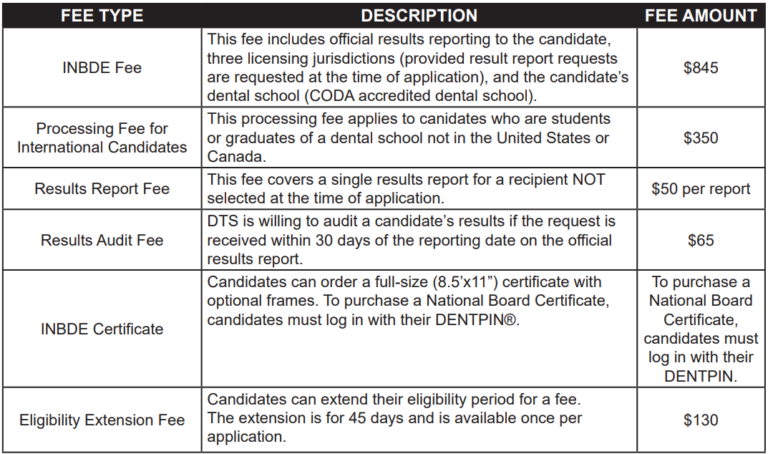
Essential preparation strategies and tips for INBDE success
“By failing to prepare you are preparing to fail”, said Ben Franklin. Therefore, having a strategic approach and the discipline to follow through are the first tips to ace the exam.
Here are some important strategies that you can employ:
- Set a timeline to give your test. Your time-table should include adequate breaks and periods of rest in between to help you start afresh every time you sit back to study
- On average, the preparation time that candidates take to give the test is 3-4 months. But keep in mind, your schedule should be tailored to your pace
- Next, book a date to take the test. With no timeline in mind, you will tend to procrastinate. But with deadlines, you will approach your days with more responsibility.
- For preparation, I would refer to Mental Dental’s, Dr. Ryan’s Rule of Three.
Dr. Ryan’s Rule of Three:
- The first time is the initial exposure to study material such as watching a video or reading a textbook
- The second time is studying the material by either writing it down or typing it up.
- The third time, which is often overlooked, is reviewing the material, preferably within the first 24 hours after the initial exposure.
- Now that you have read and reviewed the material, what you need to do next is do it all over again. Practice is the name of the game and to ace this exam you should practice as many questions as possible and take as many quizzes as you can. This will not only make you realize your areas of weakness but also help you build confidence over time
- Learn the concept behind every question, do not just memorize and rote. Most practice tests have detailed explanations on why a certain answer is preferred over the other.
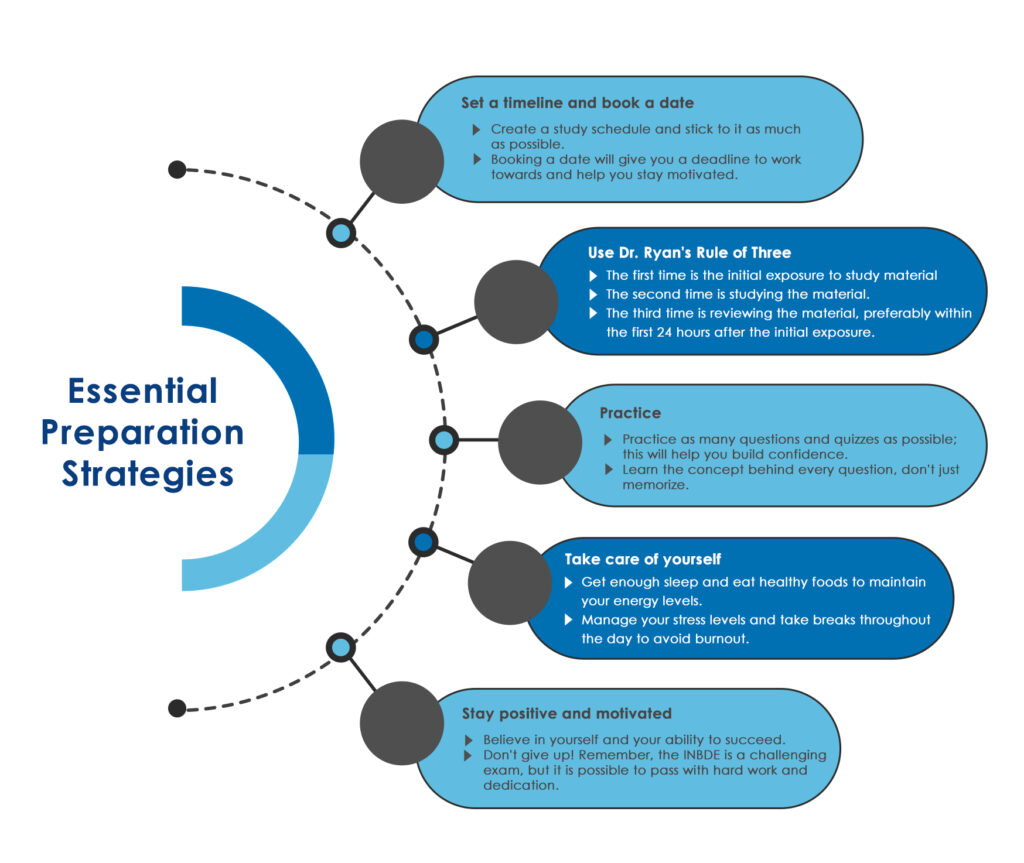
Recommended resources for INBDE study and practice
The internet can be distracting, but with some due diligence here is an overview of trusted study material that you may find useful
- Your core study material needs to be a reserve of practice questions which you go through every day during prep time. These questions also have a detailed explanation of every answer to clear your concept on a topic. Some examples of such resources are INBDE Bootcamp, INBDE Booster and Dental Mastery
- To begin with, Mosby’s and First Aid for the NBDE Part-1 and Part-2 are some conventional, highly sought-after resources. You can opt for either one of the above to kickstart your preparation.
- Another great resource is Dr. Ryan’s Mental Dental videos on YouTube which provide concise and clear explanations on most of the topics included in the INBDE syllabus.
- A great supplementary time-tested resource is the Dental Decks flashcards which many candidates also use as primary study material.
- You can also access free flashcards on Anki by TheFrenchDentiste to check your knowledge on the go on your device.
- Many candidates recommend going through Tufts Pharmacology to clear concepts of Pharmacology.
- Solving INBDE sample questions provided on the JCNDE website and reading through the ADA principle of ethics is also very important before giving your test.
We at Caapid Simplified have read through extensive feedback from candidates looking for a mock test to assess themselves before their exam. That is why we have come up with our Mock INBDE- Caapid Simplified, a mock test simulating the format and duration of the actual exam. Day 1 will consist of 360 questions, and Day 2 will have 140 questions. The total time for Day 1 would be 8 hours approximately (including breaks), and Day 2 would be 4 hours (including breaks). So, test your mettle by clicking on the link and enroll for the test.
Common Mistakes to Avoid & How to Overcome Them
It is only natural that through your INBDE journey, you will make mistakes. The information rendered in this blog, however, shall help you avoid major pitfalls.
- Not having a timeline to prepare. You cannot realistically expect favorable results during test day if you haven’t been disciplined in your preparation, the first step of which is preparing an efficient time table and trying your level best to stick to it. A plan made, if not followed, isn’t really a plan at all.
- Reading through your academic textbooks without practicing with questions and quizzes will not help you pass the exam. The study material listed in the previous section will more than serve its purpose to prepare you for your day. Also, the key word here is- Practice!
- Having no rest in between your study sessions and not getting enough rest/ sleep will have more of a counterproductive effect than you can possibly imagine. Take some time off between sessions and include a day or two of rest in a week. You can’t really retain well on a drained mind.
- The INBDE is an exam of endurance with day 1 of testing being 8 hours and 15 mins long. It is a very exhaustive exam for every candidate but if you build your endurance over time by increasing the volume of practice questions solved per sitting, you can gradually improve and expand your span of concentration. Just picture running a marathon rather than sprinting. It will also give you a handsome idea of how to pace yourself between questions.

Final thoughts
The INBDE is a test of endurance for candidates and the ones who have run their races diligently while following a schedule are sure to make it through. It is absolutely normal to feel anxious on exam day or even in the weeks leading up to the exam. It is, however, your duty to reassure yourself and acknowledge the efforts you have put in during your preparation. And thus, it becomes all the more important to be well-rested the night before taking the test.
The INBDE certification will put into motion your application for dental school and serve as the beginning of your journey to being an American dentist!
Onwards and upwards!
Steps involved in sending INBDE/ADAT Report to ADEA CAAPID – Caapid Simplified
INBDE Test Day Tips
- Make cheat sheets or index cards to revise from instead of cramming new information on the day of the exam
- Spend an hour going through practice questions that you previously had trouble with if you feel the need to revise.
- What do I carry to the test center (A checklist)
- Two forms of identification (Passport/ Driver’s License/ Credit Card/ Debit Card/ PAN card): Must be government-issued with your full name and signature on it.
- Water
- Cheat sheets for revision/ other preparatory material
- Fruits/ Candies/ Granola bars/ sugar sachets/ juice boxes (Anything rich in glucose)
- Lunch (Note: Egg salads don’t sit well in the locker )
- Pain killers, antacids, anti-emetics
- Arrive at the exam center 30 to 45 minutes prior to the start of your exam. This will give you ample time for identity verification, stashing your belongings in the locker and revision
- Ensure that your pockets are emptied before you step in for a security check. Stationery will be provided at the exam center and you are not required or rather permitted to bring yours.
- Make use of your scheduled breaks to hydrate and replenish your system with glucose. This is extremely important especially on the first day of the INBDE (a two-day exam) to avoid fatigue.
- You are allowed to take unscheduled breaks from your exam but the clock continues to tick during the same. You can use the restroom or get yourself a cup of water from the cooler then. However, you will not be permitted to access the contents of your locker
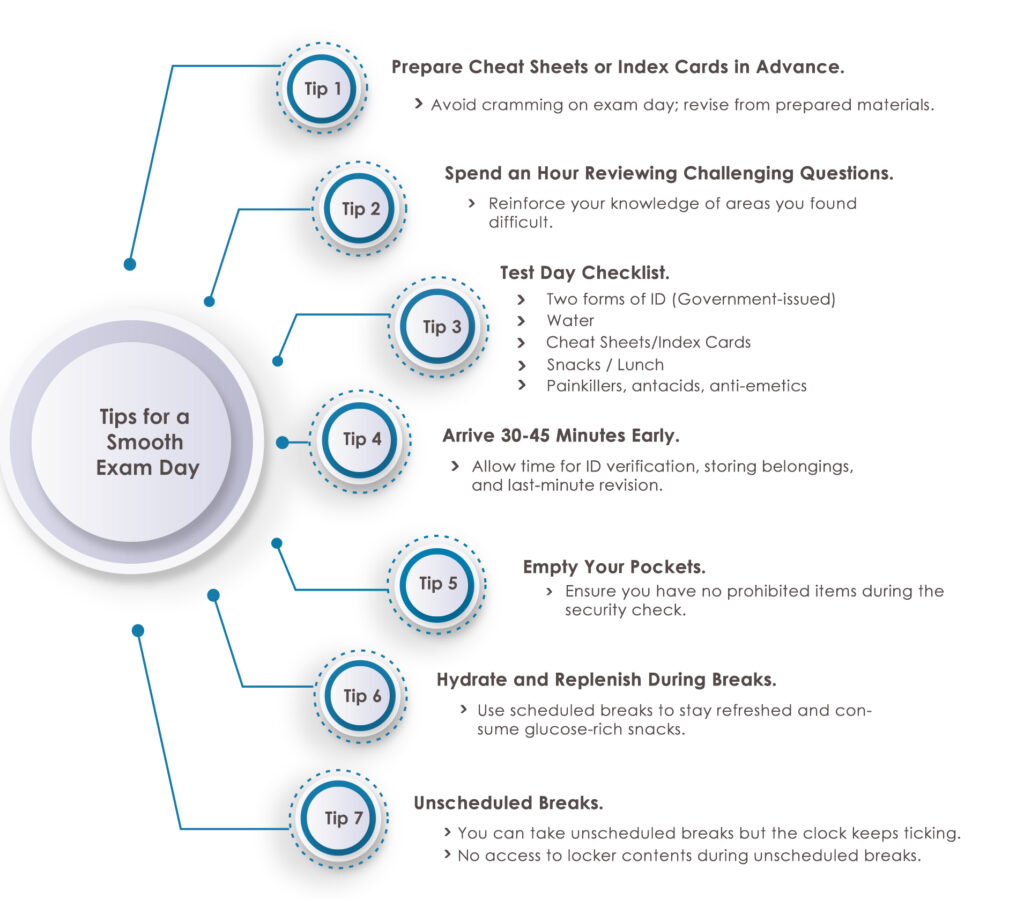
My experience preparing for the INBDE.
The question ‘Was it worth the risk?’: rang in my head louder than a song I was listening to on a loop on my flight back home to Chennai. My stint in Chicago had come to an end and I was going back to my routine in India: A full-time job as an associate dentist and a part-time job of refreshing my inbox every half hour with no avail. Having completed the INBDE and the ADAT, I was anticipating the results for the same. Among these nerve-wracking moments, I sensed bouts of satisfaction and self-doubt as I reflected on how it began.
Timeline:
- Planning the preparation timeline and purchasing resources: March 2020
- Comparison of study materials to standardized textbooks to identify unknown areas and weaknesses: March 2021
- ECE evaluation completion: January 2022
- Application for the INBDE and ADAT: April 2022
- Preparation for the INBDE:
- Clinical Sciences: March 2022-May 2022
- Biostatistics: June 2022 (1 week)
- Biomedical Sciences: June 2022- July 2022
- Revision and practice questions: June 2022- August 2022
- Test day (INBDE): Aug 26th and 29th 2022
Resources I used to prepare for the INBDE:
- Clinical Sciences
- Mosby’s for NBDE Part 2
- YouTube channel: Mental Dental
- Biomedical Sciences (Head and Neck anatomy and Tooth Morphology)
- First Aid for NBDE Part 1
- Dental decks for Dental Anatomy
- Practice questions:
- Dental Mastery for the INBDE (partial usage only)
- INBDE Bootcamp (free version)
- Questions posted on discussion forums on Facebook
Alternative resources to consider
- Dental Decks for NBDE Part 1 and Part 2
- B&B dental
- Dentin
- INBDE Booster
I was pursuing a mandatory clinical rotation at my dental school in India when I decided to apply for the INBDE and ADAT. In order to fulfill my eligibility requirements, I applied for attested copies of my transcripts from the parent university and got the Certificates of Eligibility (COEs) signed for the INBDE and ADAT signed by the Dean.
Firstly, I emailed the scanned copies of the COEs to JCNDE (This was permitted throughout the course of the COVID-19 pandemic). Secondly, I informed ECE regarding my inability to turn in my internship completion certificate and diploma as I hadn’t completed my clinical rotation. This was followed by an application for a course-by-course report to be sent electronically to JCNDE. Though I assumed that I would receive eligibility to apply for the tests within a month, a cybersecurity issue at the ADA delayed the process by a month and a half. Eventually, I was able to apply for the exams and reserve my slots at the desired centers three months before the estimated test date. I decided to take the ADAT first followed by the INBDE to check a difficult exam off my list before easing into a mandatory requirement to apply to dental schools. However, I regret taking them two days apart. While the outcome wasn’t affected significantly, it was a stressful phase that I brought upon myself.
I took the ADAT at a Pearson Vue testing center within the Chicago Architecture Center. Once my identity was verified in the reception, I was asked to head to the testing center in the elevator. As I waited in line for the main identity verification, I hastily flipped through my notes attempting to cram some information that I couldn’t recall. After verifying my identity, the proctor took me aside to have my photo taken. Finally, I was allowed to stow my belongings in a locker and walk towards the testing room with my ID and locker key. A proctor ran a security check, registered my fingerprints digitally, handed me a paper and a couple of markers and ushered me into the testing room. The testing experience was smooth with no technical difficulties. I used both the scheduled breaks to have granola bars, oranges and hydrate myself after which the proctor repeated the security measures before letting me inside the testing room. Once the test came to an end, I was asked to complete a survey and a proof of test competition was handed over to me.
One exam down. One more to go………..
The following day, I travelled to Merrillville, Indiana to take the INBDE. While I assumed that the recollection of information for the INBDE would be doable having taken the ADAT a day back, a bout of self-doubt had me hooked in fear. On the eve of the exam, I realised that I wouldn’t be able to complete my revision in time for the INBDE. I stayed up all night frantically trying to test myself on various subjects. At 5 a.m., I began to panic. I called my family back home, expressed my concern and considered re-scheduling my exam. However, I realised that my impulsive and irrational thoughts were fueled by fear. I decided to reach the Prometric Center well in advance to ease my jitters. My testing experience was similar to that of the ADAT, though the INBDE was taken over a 2 day period with multiple scheduled breaks. The security check, however, was more stringent. I was asked to unfold my sleeves and collars this time. In addition, I was told that if I carried my face mask inside, I would have to wear it at all times. On the second day, as I stepped out of the testing room hoping that it was the last time I took the test, a proctor warned me about a ‘Thunderstorm alert’ that she had received. A clap of thunder followed….
Concomitantly, a notification on my phone brought me back to reality at home in Chennai. A fellow test-taker had received his INBDE results. Having received my ADAT results a couple of days ago, I was more than ready to get this over with. I signed in to my account shakily to view the most awaited four-letter word on the screen: ‘PASS’. To date, this experience has taught me the importance of time management, setting realistic goals, and believing in myself.

